Play/Pause
Mute/Unmute
Embed video
Playback Speed
Video Quality
Embed video
Copy the code below to embed the video.
<div _="@=1378,dis=none"><div _="@=1379,dis=none"></div></div> Copy
Playback Speed
2
1.75
1.50
1.25
Normal
0.50
Video Quality
Play/Pause >>
Mute/Unmute
0:00 / 0:00
Settings Closed Captions Picture in Picture Cast Fullscreen
Play/Pause >>
Mute/Unmute
0:00 / 0:00
Settings Closed Captions Cast Fullscreen
SEVIER COUNTY, Utah — It can be seen from the interstate when driving through central Utah: A 600+ acre solar farm generating 80 megawatts of power back on the grid. It's just the latest in some two dozen to become operational here in Utah — the 11th-top state in the nation for solar production — as the federal government creates incentives to develop alternative energy.
Sevier County Economic Development Director Malcolm Nash said developers approached county leaders for the project.
"They said, 'Can you help us locate ground that’s single-owner? About 6-800 acres.' And we said, 'Well, there’s this one spot,'" Nash recalled.
He pointed them to a location just west of the town of Sigurd — out of the way, but right next to a major substation.
"The issue for a solar generating plant, or any power plant for that matter, is just access to the grid," Nash said.
Nash said initially, Sevior County commissioners were not in favor of the project but then changed their mind.
"It’s like any project. It has its pros it has its cons. For us, the pros outweighed the cons, so we went ahead and participated," he said.
Sevier County was able to negotiate with developers of this facility, and in return for some federal incentives offered, they got something back.
"We were able to get some money, some revenues, to help build student housing on the campus of Snow College," Nash said. "That’s one reason why we like the project here is because it opened that revenue stream."
"To Sevier County’s testament, they did a very good job of leveraging that investment to the long-term benefit of the community," said Stuart Clason, the regional growth director with the group Utah Association of Counties.
Clason says the group advises local leaders negotiating with developers on how to best utilize the influx of capital coming into areas that could really use it.
"They want to capture as much of that new tax revenue locally," he added.
There are projects now operational or in the works in Emery, Carbon, Beaver, Millard, Juab, Tooele, Box Elder, Rich, Iron and Washington counties.
"We need to have our eyes wide open and understand what these investments mean," Clason said.
Millions are spent on the project, usually by large corporations, and in the location in Sigurd, it is now owned by New York City-based hedge fund D.E. Shaw, who allowed FOX 13 on the property to get a closer look.
Meanwhile in Iron county, the Cedar City and Iron County economic development director Danny Stewart says they've known for a long time that they have a great solar resource. Iron County hosts the first utility-scale solar farm to go operational: the Utah Red Hills project that went online with its 340,000 photovoltaic panels in December 2015.
"It opened the floodgates for other solar development within the county," Stewart said.
The high altitude, cooler temperatures, available sunshine and affordable land made this region a prime location for this type of technology. They now have 13 projects that are operational and 17 power plants of various sizes. That's 6,000 acres of solar panels in Iron County with three new projects to be built by the first of next year. Stewart says they're expecting to deliver over 1,000 megawatts of power to the Rocky Mountain power grid.
"All the projects that are currently in production here in Utah are the photovoltaic power. They’re absorbing sunshine that’s already coming down. We don’t have any of the reflective power projects. I know that there’s been concern and fear about those, bird migration and different things. But this is a really safe, really clean energy," Stewart said.
But he says as far as providing jobs to these rural areas, they don't deliver.
"Rural economic development is interesting. We want jobs. We really need jobs in the rural areas of the state. And when we started looking at solar, we really started to evaluate: These aren’t huge job creators," he said. "I mean, they are for 12-18 months — a flurry of activity during the construction, but after that, it’s very minimal. Then you start looking at the other plusses. The ability to use the resource, the ability to generate some revenue that wouldn’t happen otherwise and utilize some property that is underutilized if at all. We found that for Iron County, it really meets a lot of our economic development needs here."
Nash said there were some philosophical issues with moving forward on a solar farm project in a county that hosts the largest coal mine in the state.
"On a number of levels, it makes sense. It helps with the country’s energy transition. It feels like the responsible thing to do," he said.
Thirty miles up Salina Canyon and just about a 40-minute drive from the solar farm in Sigurd, SUFCO is one of the longest continuously running and most productive underground longwall mines in the nation. It's also an economic engine and a major employer for this region — something Nash says this new project won't change.
"This one doesn’t look like it’ll be a threat. They’re going in across the country. We just as well participate," Nash added. "It’s just another feature on the landscape, if you will. You’ll drive by and take a look at it and say, 'That’s kind of neat.'"
He says the lifespan of these panels is about 25-30 years, with provisions in place for the developer to clean up the site and put the land back to its original condition if they do move on.
Nash, Clason and Stewart say the next challenge in the future of solar power in Utah is battery technology and energy storage.
Copyright 2021 Scripps Media, Inc. All rights reserved. This material may not be published, broadcast, rewritten, or redistributed.

 435.215.7170
435.215.7170




 Service Areas
Service Areas























